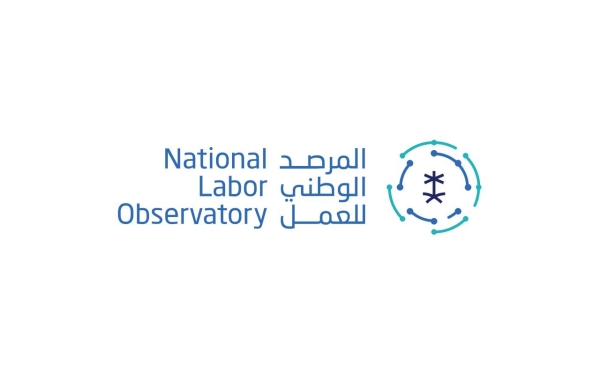

The National Labor Observatory, a primary source of labor market data and insights in the Kingdom of Saudi Arabia, operates under the Human Resources Development Fund (HADAF). It was established on June 28, 2012, and its main headquarters is located in Riyadh City.
The National Labor Observatory’s strategy
The National Labor Observatory reactivated its role and redefined its vision and strategic objectives in alignment with the labor market strategy approved by the Council of Ministers in 2020. The observatory launched its new strategy and operational model in 2022, following benchmark comparisons with international observatories, an analysis of globally advanced observatories, and incorporating the insights and suggestions of stakeholders through a series of internal and external workshops. This was done in partnership with the World Bank to create a guide of enablers and success factors for global observatories and ways to implement them within the strategy for activating the National Labor Observatory.
The strategy focused on diversifying and expanding the topics, products, and services related to the labor market to meet the needs and requirements of beneficiaries. Among the topics are professions, employment, education, social affairs, skills, macroeconomic trends, and demographic characteristics.
The products and services included data, research bulletins, data indicator dashboards, statistical reports, predictive reports, and data-driven policy analysis reports.
Objectives of the National Labor Observatory
The National Labor Observatory aims to maximize the value derived from labor market data by expanding and improving the data scope, contributing to clear insights. It seeks to redefine value for beneficiaries by enhancing the services and products provided to key beneficiaries through customized offerings and prioritization based on needs. Additionally, the observatory aims to lead the labor market narrative based on facts and data by strengthening local and global outreach and impact through active engagement and communication.
It also aims to improve and enrich data quality by conducting research and surveys to verify its accuracy. Additionally, it produces labor sector insights by providing data, analyses, and recommendations to labor policymakers through specialized expertise in the field. Additionally, it seeks to gather, link, and publish comprehensive labor market data.
Products of the National Labor Observatory Portal
The National Labor Observatory offers several products aimed at understanding the trajectory of human capital and the labor market, aligning education outcomes with labor market needs to enrich data quality and connect it with international trends. These products include:
- Indicators: These include graduate employment indicators, private sector employees registered in social insurance, job mobility, and stability indicators in the private sector, occupied positions and salary rates, workforce participation of individuals with disabilities, private sector establishment indicators, government sector indicators, and indicators for freelance and flexible work.
- Indicator Dashboards: These include dashboards for occupied positions and salary rates, dashboards for graduate employment indicators from universities in the Kingdom, dashboards for employment reports of beneficiaries of HADAF programs and services, and dashboards for establishments subject to the Nitaqat Program.
- Reports: These include the Saudization Report, Graduate Employment Report, Working Hours Report, Profession Review Report, Gender Gap Analysis in the labor market, and Labor Market Benchmarking Report. These reports provide data on various labor market topics and are regularly developed and updated.
Committees of the National Labor Observatory
The National Labor Observatory has formed committees to govern its products and services, ensuring the quality of its outputs and stakeholder satisfaction by involving them in the development and approval of services and products. These committees include:
Steering Committee: Formed by a ministerial decision in 2021, this committee is responsible for overseeing the implementation of the observatory's data strategies, managing data exchange mechanisms with relevant entities, and making necessary decisions to activate and support the tasks and responsibilities of the observatory.
Executive Committee: Formed by a ministerial decision in 2021, this committee provides guidance and empowerment for the observatory’s operations, supports the development of its current and future products, reviews security and privacy policies and controls for data exchange, and submits necessary recommendations to the Steering Committee for approval, publication, and guidance.
The National Labor Observatory Portal
The National Labor Observatory Portal was launched in conjunction with the release of Saudi labor market indicators on January 31, 2019. It serves as an electronic platform hosting the observatory's products and projects, providing access to data and regularly publishing indicators. The portal is designed to serve government entities, international organizations, the private sector, job seekers, researchers, and academics.
The portal contributes to supporting the strategic transformation of the labor system by providing data and information on current and future topics related to the Saudi labor market. It publishes survey studies prepared through research partnerships with local and international organizations.
Partnerships of the National Labor Observatory
The National Labor Observatory supports its partnership with various labor market trend regulators worldwide, including sixty-three entities, to enable data exchange and assist in policy design. In 2023, the observatory signed twenty-one data-sharing agreements with private and public universities. These agreements focus on sharing graduate data and indicators to enhance products related to forecasting the future of the Saudi labor market.
Related quizzes
Related articles

